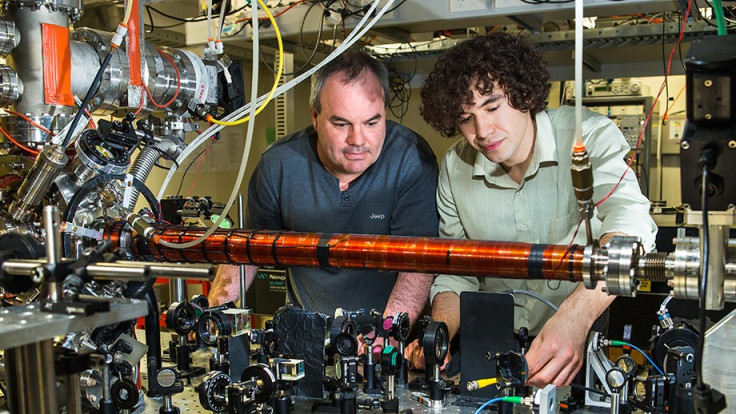Quantum weirdness proved again with measurement changing atom's past

Reality, according to the quantum theory, is an illusion until one pins it down with a measurement.
This has been proved yet again in a delayed-choice thought experiment done by physicists at the Australian National University (ANU) where the act of a measuring was shown to affect an atom's past.
Where common sense in the "real" world around would dictate that an object is independent of measurement in its status, quantum physics places most importance on the act of measurement.
"It proves that measurement is everything. At the quantum level, reality does not exist if you are not looking at it," said associate professor Andrew Truscott from the ANU Research School of Physics and Engineering.
The ANU team not only succeeded in building the Wheeler experiment, first proposed in 1978, but went a step ahead and used atoms scattered by light to study the quantum weirdness.
A wave like behaviour (interference) or particle behaviour (no interference) depends on how one measures the system.
Many experiments using variations on John Young's "double-slit" process have shown that light decides to be a wave or a particle if it is (or is not) measured.
A measuring device to "observe" the light seems to turn it into a particle as shown by blobs of light on a film. If left unobserved it is a wave as seen by the interference pattern.
Wheeler suggested an intriguing variation now known as the "Delayed Choice" where the point of measurement is after the photon/wave has gone through the slits (by when it should have determined its wave or particle nature).
Delayed choice
The observer's "delayed choice" determines whether the photon has taken one path (particle) or both (wave) after it has already done so. The experimenter, it would seem, changes something that has already happened.
"Quantum physics' predictions about interference seem odd enough when applied to light, which seems more like a wave, but to have done the experiment with atoms, which are complicated things that have mass and interact with electric fields and so on, adds to the weirdness," said Roman Khakimov, PhD student at the Research School of Physics and Engineering.
Truscott's team first trapped a collection of helium atoms in a suspended state known as a Bose-Einstein condensate, and picked a single atom from the pack.
This was then dropped through a pair of counter-propagating laser beams, which formed a grating pattern or crossroad.
A second light grating that recombines the paths was randomly added, which led to interference pattern as if the atom had travelled both paths.
When the second light grating was not added, no interference was observed as if the atom chose only one path.
However, the decision to add the second grating was taken only after the atom had already passed through the crossroad.
If one chooses to believe that the atom really did take a particular path or paths then one has to accept that a future measurement is affecting the atom's past, said Truscott.
"The atoms did not travel from A to B. It was only when they were measured at the end of the journey that their wave-like or particle-like behavior was brought into existence," he said.
© Copyright IBTimes 2024. All rights reserved.






















